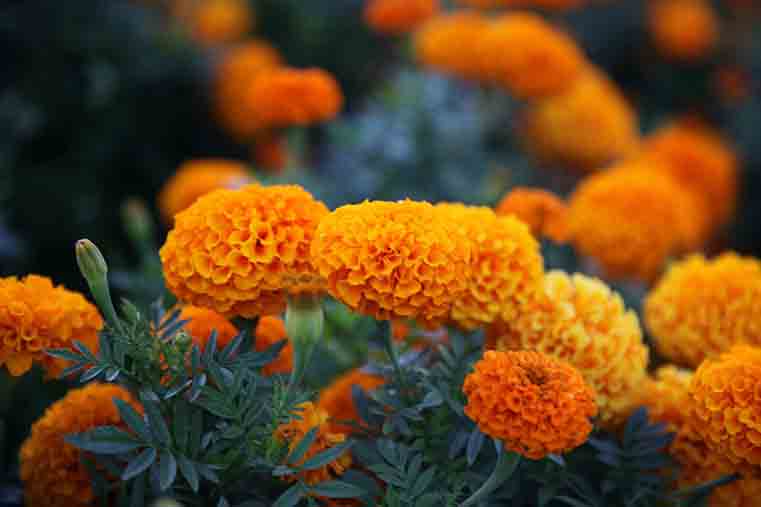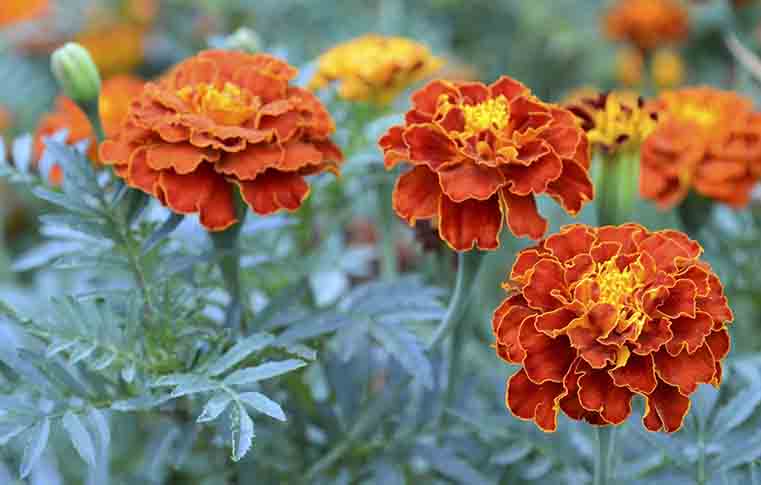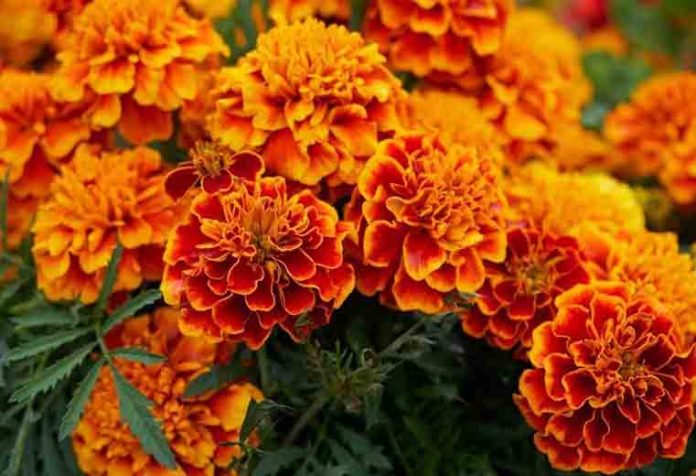Marigolds, known for their vibrant colors and pleasant fragrance, hold a revered place in Hindu culture, symbolizing purity, devotion, and the cycle of life and death. These flowers are often associated with auspiciousness and are commonly used in various religious ceremonies and rituals. During festivals such as Diwali and Navratri, marigolds adorn homes and temples, embodying a spirit of joy and celebration. The act of offering marigold garlands to deities is not just a ritualistic gesture; it signifies the belief in elevating one’s consciousness through devotion. This floral tribute acts as a bridge between the physical and spiritual realms, allowing devotees to express their reverence in a tangible form.
In addition to their ceremonial use, marigolds also play a vital role in funerary rites. Their bright orange and yellow hues symbolize the sun, representing the soul’s journey and transition. These flowers are often placed among the offerings to invoke blessings for the departed and to ensure a peaceful passage to the afterlife. The striking contrast between the vibrant marigolds and the somber context of mourning reflects a nuanced understanding of life’s dualities—celebration and loss, joy and grief. Furthermore, their association with the Hindu goddess of wealth, Lakshmi, further emphasizes their significance, as they are believed to attract prosperity and good fortune into one’s life. Thus, marigolds are not merely decorative elements; they encapsulate complex meanings that enrich the spiritual tapestry of Hindu rituals.
Understanding the Rituals: How Marigolds Enhance Spiritual Practices
Marigolds, often referred to as “Tagetes,” hold a revered place in Hindu spiritual practices, symbolizing purity and the vibrancy of life. These bright, golden flowers are much more than decorative elements; they are powerful symbols that enhance the sanctity of rituals. During pujas (prayer ceremonies), marigolds are commonly used in garlands, offerings, and altars, believed to attract divine energies and foster an atmosphere of devotion. The vivid color of marigolds, reminiscent of the sun, is thought to represent the divine light, aiding practitioners in their spiritual endeavors and creating a direct connection with the divine.
The significance of marigolds extends beyond their aesthetic appeal. They are often associated with auspicious occasions, including weddings, festivals, and memorial services. Their presence in rituals serves multiple purposes, such as:
- Spiritual Cleanliness: Marigolds are known for their purifying properties, helping to cleanse the atmosphere of negative energies.
- Invoking Good Fortune: These flowers are believed to attract prosperity and bless the participants with good luck.
- Symbolizing the Cycle of Life: The lifecycle of marigolds—from blooming to wilting—reflects the transient nature of life and death, reminding devotees of the importance of honoring both.
Incorporating marigolds into spiritual practices not only enhances the aesthetic but also deepens the connection to sacred traditions, fostering a sense of belonging and reverence in the hearts of practitioners. This vibrant flower continues to bloom at the intersection of the earthly and the divine, serving as a cherished tool for spiritual enhancement.
Cultivating Marigolds: Tips for Growing These Sacred Flowers at Home
Growing marigolds at home not only enhances the beauty of your garden but also connects you to a deep-rooted tradition celebrated across many Hindu rituals. To ensure these vibrant blooms thrive, it’s crucial to start with well-drained soil rich in organic matter. Consider amending your garden bed with compost or aged manure for optimum health. Plant your marigold seeds or seedlings in a location that receives full sun, as these flowers flourish with at least six hours of direct sunlight each day. Regular watering is essential; however, it’s best to allow the top inch of soil to dry out between waterings to avoid root rot.
In addition to soil conditions and sunlight, understanding the pests that may threaten your marigolds is vital. Marigolds are known for their pest-repelling properties, often used in companion planting to protect other crops. To keep your marigolds flourishing, consider the following tips:
- Regularly check for aphids and spider mites, which can severely damage your plants.
- Use natural insecticidal soap if you encounter any pest issues.
- Deadhead spent blooms to encourage further flowering and maintain a neat appearance.
Ultimately, nurturing marigolds involves patience and attention, resulting in a stunning display of sacred blooms that resonate with the rich traditions they embody.
Integrating Marigolds into Modern Celebrations: A Guide for Contemporary Practitioners
As contemporary practitioners seek to add depth and authenticity to their celebrations, marigolds present a vibrant way to honor tradition while embracing modernity. Known for their bright, golden hues, marigolds have long been revered in Hindu rituals as symbols of prosperity and purity. When integrated into modern festivities, these flowers not only uplift the aesthetic but also infuse spiritual significance, making spaces feel more connected to cultural heritage. Highlighting marigolds can transform an ordinary setting into a festively charged atmosphere, where the essence of tradition meets contemporary celebrations.
Incorporating marigolds into modern rituals may involve several creative approaches:
- Decorative Elements: Use garlands of marigolds to adorn altars, event stages, or personal spaces, creating a striking visual impact that resonates with attendees.
- Floral Offerings: Present marigold blooms during prayer sessions or ceremonies as symbolic offerings, enhancing the spiritual ambiance and connecting participants to heritage.
- Craft DIY Projects: Engage guests in creating marigold wreaths or centerpieces, making the experience interactive and fostering a sense of community.
This multifaceted integration not only enriches the celebration but also educates participants about the cultural importance of marigolds, bridging the gap between the past and present.
